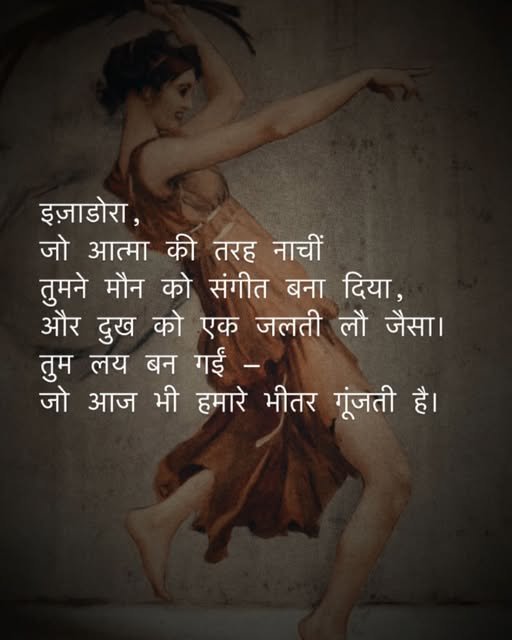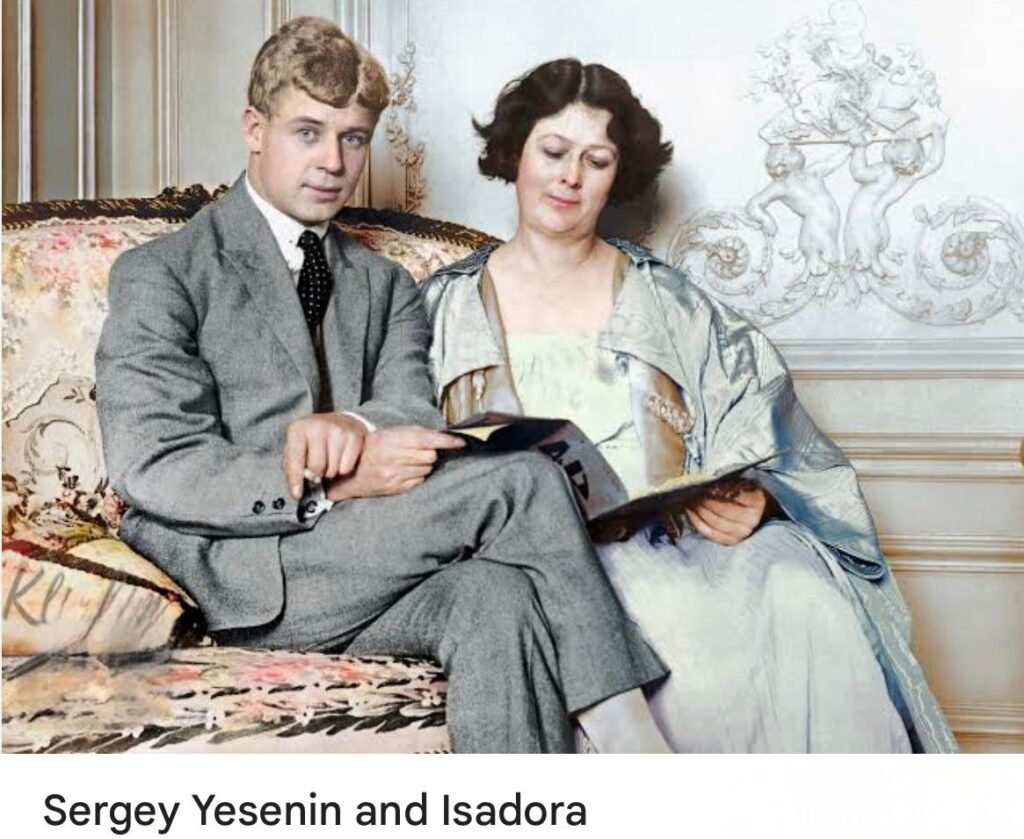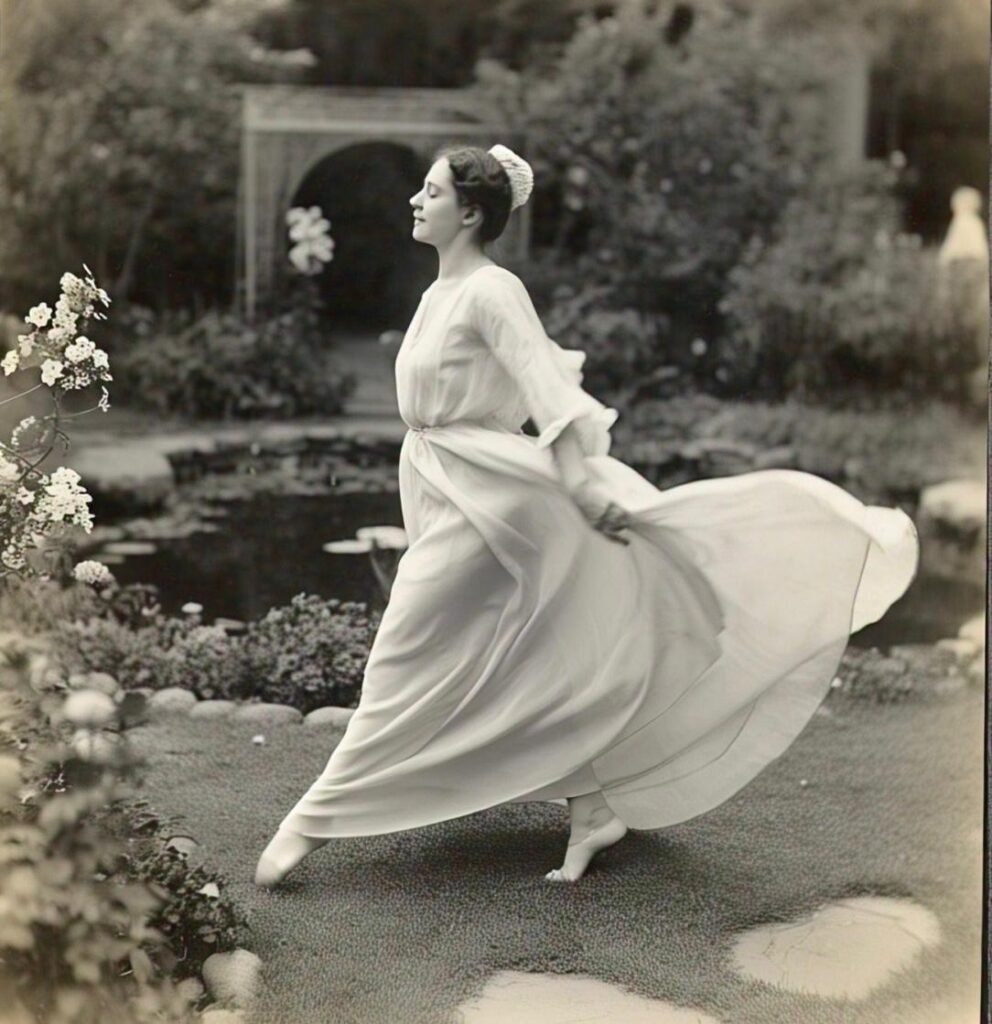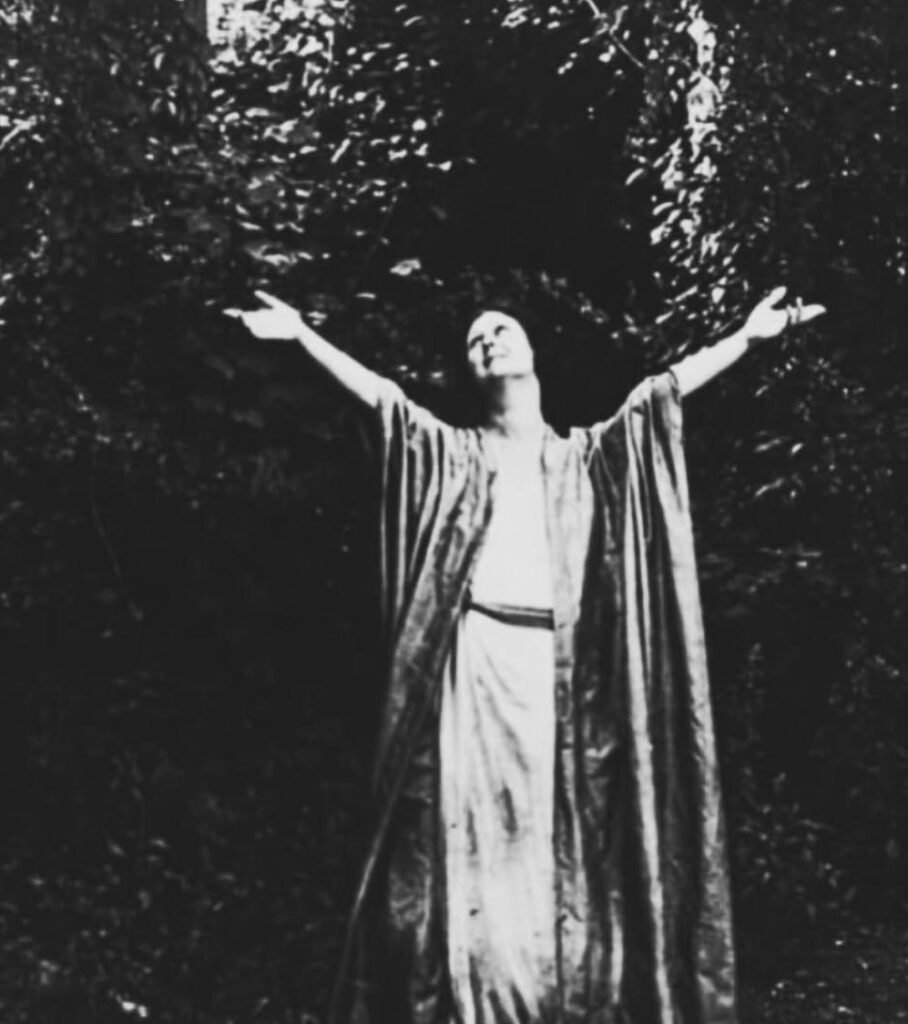by Shubhgauri
What struck me most while reading the autobiography of Isadora Duncan was her candid, uninhibited personality. In her own eyes, she hadn’t achieved anything significant in life—neither financial security nor fulfilment in love. Intensely sensitive toward her art of dance, mingling with high society, dream girl to many men across the world, and yet, even among admirers, she considered herself profoundly unfortunate.
God may have been kind to her soul, but that soul was shadowed by a deep absence—the absence of a true, devoted lover with whom she could have lived her artistic life in a divine rhythm.
Richard Austin, a prominent dance critic in England, frequently criticised Isadora’s lifestyle and ideals. He said, “I don’t understand how such a foolish woman could create such profound art.”
I strongly oppose Richard Austin’s judgment. Isadora was neither foolish nor dull. She simply couldn’t conform to the world’s colors because she was extremely sensitive—sensitive about her art, which she refused to modify for anyone. It was hers alone, and she longed to pass it on to future generations.
When she danced, she conversed with God. She celebrated her womanhood, adorned by the vibrations that rose through her body. Barefoot in simple, flowing attire, she remained connected to nature—and this very beauty drove people mad. Writers, artists, and painters of her time were eager to capture her essence in their work.
And yet, despite it all, she continued to see herself as ordinary.

The Clash Between Love and Freedom
A woman who can love herself and dares to live life without falling under another’s influence—she is the heroine of her time. Some admire her, some worship her, while others call her selfish, wild, or arrogant. It all depends on who understands her.
For some, she is a muse. For others, a reckless woman.
Isadora was accused of wandering from man to man, as if she had no capacity for surrender. But I believe true surrender is only possible when the partner matches your mind and soul. Isadora was a lofty spirit—so full of energy, joy, and creation that none of the men she met could match her.
Some men were still trapped in their boyhood, while others were too grave and monotonous. A woman rich in heart, mind, and soul—how could she align herself with someone who was not wholly hers?
When one’s essence is so independent, how can anyone confine them? Even if that someone has once said, “She seems to have stepped right out of my dreams.”
Gordon Craig, who was once enamoured by her beauty, her body, her hands, eyes, feet—even her fingernails, turned possessive the moment Isadora fell in love with him.

“Why don’t you give all this up? Stop waving your arms around on stage. Stay home and sharpen my pencils instead.”
Craig, who once believed himself to be the luckiest man alive, now wanted to cage the very living artwork he had once worshipped.
Still, Isadora loved him.
Motherhood, Love, and the Contradictions of Society
Isadora never realised that the love she yearned for held no sanctity in the eyes of society. In the fervour of love, she forgot that society worships a woman’s chastity, not her romantic relationships.
Her belief in marriage had been shattered early by the traumatic marital life of her mother. She had rejected the idea of marriage as a child.
And yet, she was a true woman—abundant in beauty and art. She celebrated her womanhood, and was courageous enough to see motherhood as a natural right—not one confined by institutions.
Isadora was not made for society. She was a creation herself. And creation has every right to bear a new life.
She chose to embrace motherhood without marriage. As a result of her relationship with Gordon Craig, she gave birth to her first child in 1905.
Despite the conflicts between them, their creative energies flourished together.

Isadora herself admitted that loving an artist like Craig was the most beautiful chapter of her life.
Her last lover was Sergei Yesenin, a poet much younger than her. Despite her strong beliefs against marriage, she chose to marry him.
Critics have said that Yesenin didn’t marry Isadora Duncan, but her fame. He loved the sound of their names said together—“Yesenin-Isadora.”
And Isadora? She once admitted in an interview that she married him because he was unwell and needed care—and also because she believed she could open new creative vistas for him in Europe and America.
The marriage certificate was a necessity to gain permission from the Russian government to travel with him.
But under the pressure of this life—overexcited, self-absorbed, extravagant—Sergey Yesenin
spiraled into alcoholism. Eventually, he died from excessive drinking.
And even his death was blamed on Isadora Duncan.
After Yesenin’s death, she fell into depression—a long, slow decay that felt like dying every day.

A Tribute to Her Art: America Dancing
The 18th and 19th centuries gifted the world many artists, writers, poets, and sculptors. One of them was George Grey Barnard, who came to see Isadora’s performance one evening in New York.
He was the same sculptor who created the famous statue of Abraham Lincoln that still stands in America today.
Barnard brought with him other distinguished painters, poets, and friends—Robert Henri, George Bellows, Percy Machaye, Max Eastman, Ridgely, William, and Torres—all now celebrated names in American history.
The moment Barnard saw Isadora dance, he was captivated. He decided to sculpt her in a dance pose, and named the sculpture “America Dancing.”
Isadora’s end was as dramatic, as poignant, and poetic as a final stanza in a tragic elegy.
She worshipped love, treated art as a sacred religion, and breathed freedom.
But in the end, she was left with neither complete love nor true understanding from the world.

The Celebration of Death: Isadora Duncan Syndrome
Even in death, Isadora Duncan remained dramatic, poetic, and celebratory of her womanhood.
Her death was yet another dance—an extraordinary performance.
A fluttering, winged end.
In 1927, on a street in Nice, France, she was getting into a car. She didn’t know that her favourite red silk scarf—so free, so expressive like her soul—would get caught in the car’s wheel.
That very scarf strangled her.
What irony.
The scarf that once caressed her body like art… gave her an eternal stillness.
The freedom she wore so boldly… became her final garment.

And so, Isadora Duncan—who had danced in her dreams her whole life—merged into one last unknown dance and became immortal.
Her death, too, became her legacy.
The incident of a scarf getting caught in a motor wheel and leading to death found its way into the English dictionary.
It was named: “Isadora Duncan Syndrome.”

Good👍
Excellent content
Excellent explaination of content.